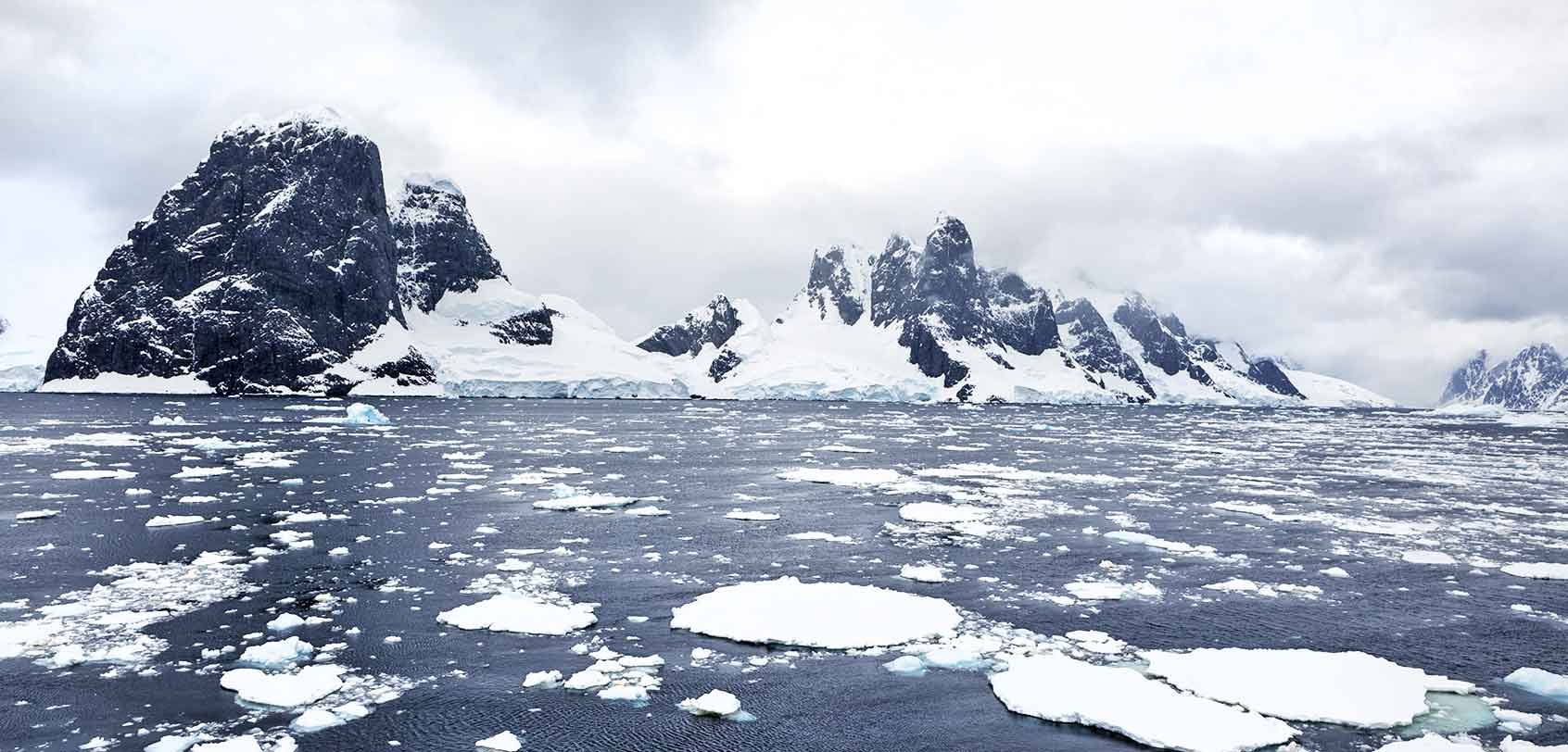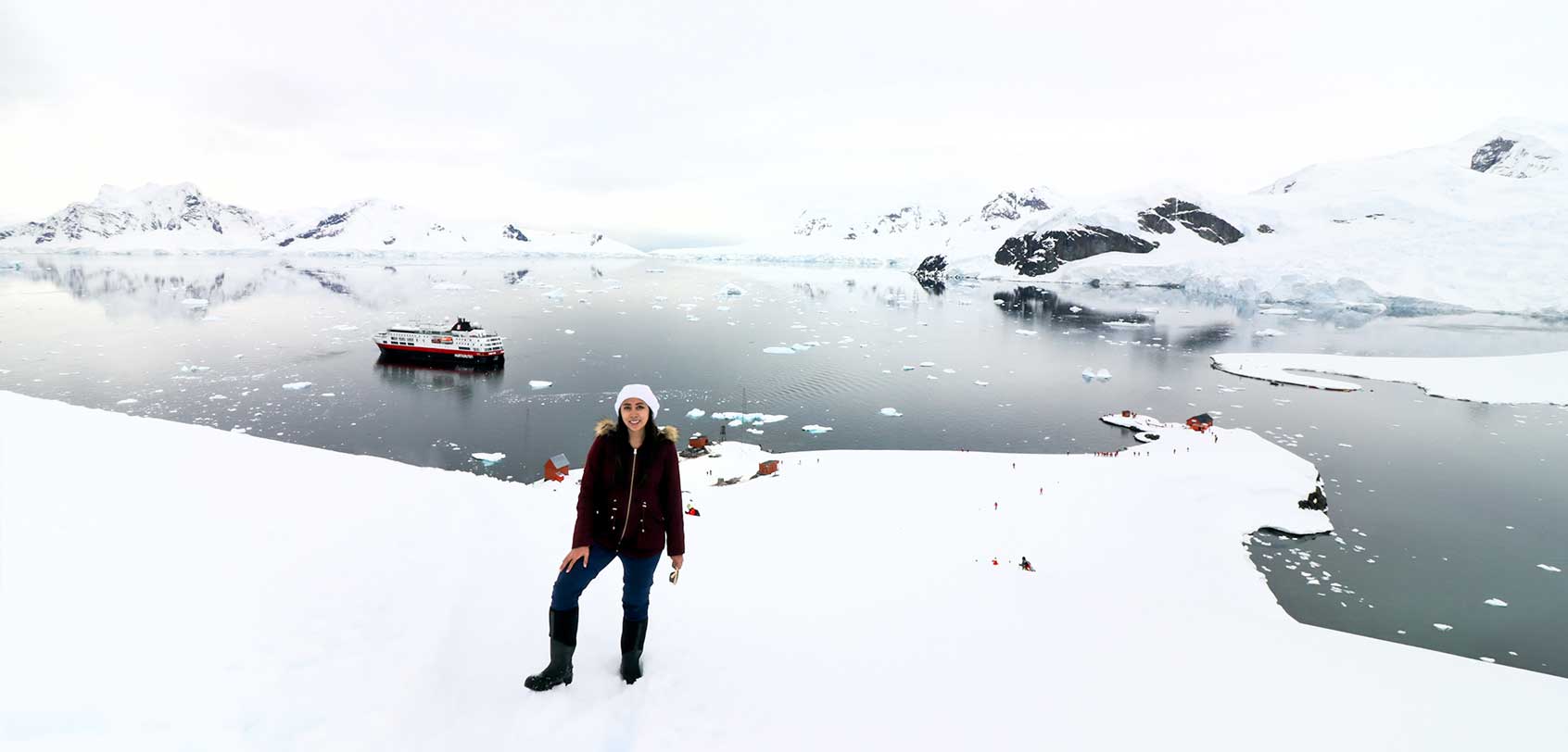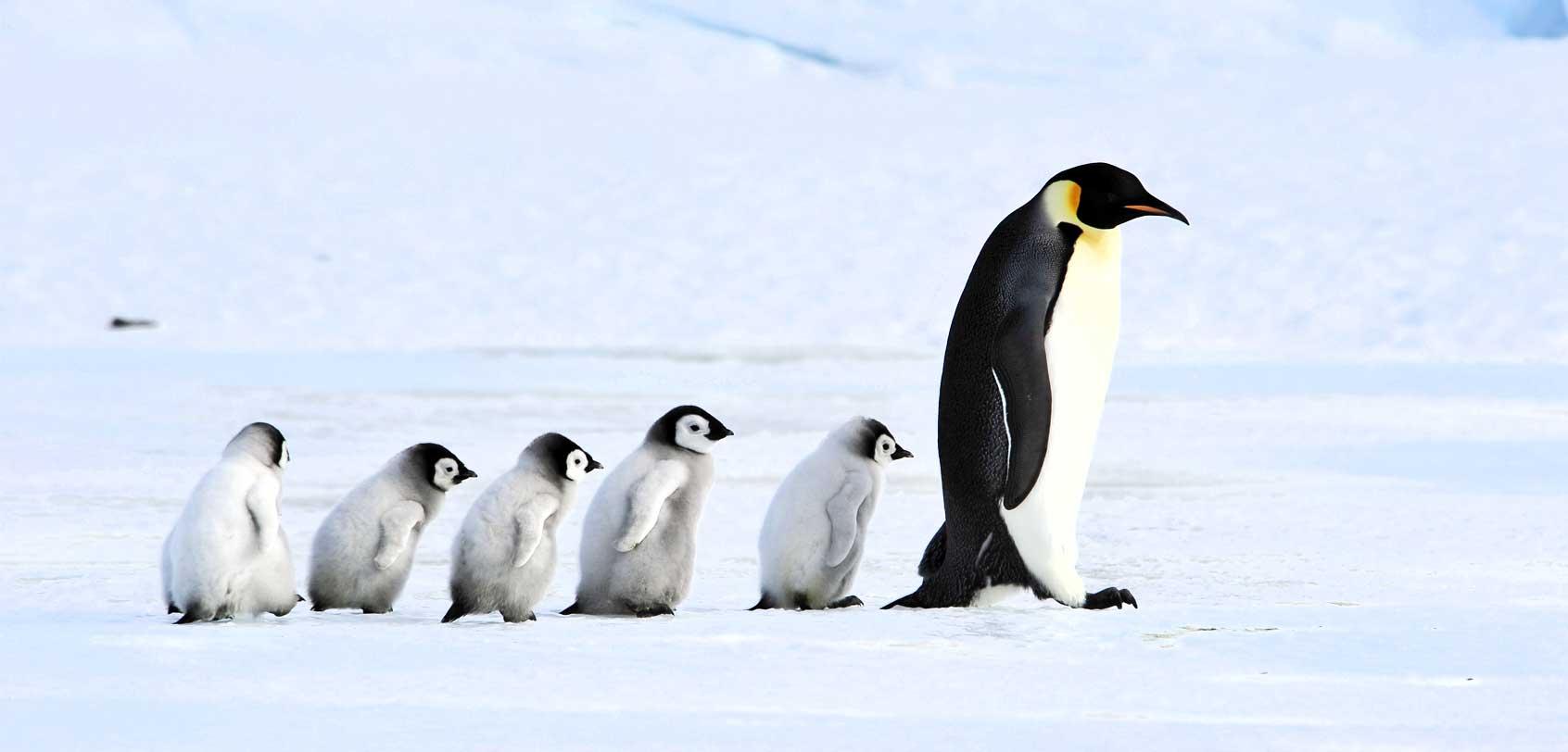I’ve had the chance to visit Antarctica last 2017 and it surely has been the most amazing trip that I have ever done in my entire life! (Antarctica FAQ)
…I’m not even kidding when I say that its pristine beauty and wildlife kept me singing praises for weeks — and even up to now. Thus, given my experience, a lot of you have been asking me tons of questions and it makes me happy to hear that a majority of you are interested in visiting this breathtaking ‘White Continent’. (Then again, who wouldn’t want to visit this amazing place, right?)
So in order to streamline everything in an organized manner, I’ve decided to put up this Antarctica FAQ (Frequently Asked Questions) post that will answer all your queries and concerns regarding Antarctica cruise expeditions. I hope this Antarctica FAQ helps!
Antarctica FAQ: Getting There
Top featured photo by Marsel van Oosten / Hurtigruten
» What are the different safe ways to get to Antarctica?
The best and safest way to visit the continent is to book through one of the member tour operators under IAATO (International Association of Antarctica Tour Operators). Not only do they demonstrate a high level of commitment and expertise for following safety protocols, but they also have a great record for being the best and common choice for any Antarctica visit. As for the different ways of reaching the ‘White Continent’, below are some of your options…
By cruise ship. This is the MOST common way to visit the Antarctic and the cruise can start and end from any of these locations: Ushuaia in Argentina, Punta Arenas in Chile, Bluff in New Zealand, or Hobart in Australia. (Antarctica FAQ)
Depending on the provider, the length of the trip, and the kind of cruise expedition that you pick, you can also do additional activities or excursions in the Antarctic as well as visit other Antarctic and sub-Atlantic islands along the way. It helps to note though that the size of the ship matters: in general, smaller ships are preferred because they can go to more places and do more landings. …Why more landings, you might ask? Well, according to IAATO guidelines, there can only be 100 people at a time on land — so, if your boat has more than 200 people, you might just spend only a few hours on the shore.
With this, I highly advise that you go for Hurtigruten’s MS Fram ship, which is a small yet strong vessel that carries about 200 guests. This was the ship that I went with when I visited Antarctica and every day, we did at least 2 landings to different locations (which was also packed with optional excursions like kayaking, camping, zodiac excursions, hikes, and others).
NOTE: Most of the Antarctic ships are NOT icebreakers since if they are, you will have a rough time crossing the seas like the Drake Passage (either way, the ships are ice-strengthened which are equally tough).
By plane. There are 3 ways to do this: you can do a [1] ‘fly over’, a [2] direct flight, or a [3] fly-cruise option. First, as the name implies, a ‘fly over’ will just be a sightseeing flight wherein you will be above the continent for hours as you admire the views. This kind of flight only takes off from Australia and it will cost from $1,000 to $8,000. Second, direct commercial flights can be done from Argentina, Australia, Chile, or South Africa — but they can be quite rare. (A quick Google search will lead you to some providers who schedule flight trips to the continent.) Lastly, the fly-cruise option will just cut your time on a cruise ship (to avoid the rough Drake Passage, for instance). These flights will take you to places like King George Island where you will then board your designated ship. Most of the time, prices for this start at $10,000 and departs from Chile.
By yacht. There are about a dozen of these charter yachts that offer 3 to 6-week trips to the Antarctic Peninsula from South America. Even if it can provide more freedom and flexibility, you must remember that it is pricier (starting at $1,000+ per day), more treacherous (the seas will rock you harder), and can require work (since most yachts would want you to help out.)
» Is it dangerous to go to Antarctica?
This is a popular Antarctica FAQ. The answer? Yes and no. It helps to note that Antarctica is an extreme environment and accidents are impossible to rule out — this is why visitors must make a realistic evaluation of their own well-being when choosing to make the trip (e.g. the ability to stay balanced on a zodiac boat when getting on and off the ship to avoid slipping or falling, etc.). Personally, I was not fit when I headed off to an Antarctica expedition, but I guess I had my youthful state to thank as well as the experienced crew staff of the ship that I was with.
Apart from your own capabilities, you should also consider that the weather in the Southern Ocean is unpredictable. A lot of modern ships and cruises nowadays, however, are able to withstand such forces of nature that’s why it’s imperative that you listen well to the safety drills that are usually held before the start of the trip. This is also exactly why it is advisable that you opt for IAATO tour operators (like Hurtigruten) since they have shown great experience and familiarity with operating in any kind of condition.
If anything happens, there are always doctors on board any Antarctica ship, but should there be a need for a hospital, it will be days away and evacuation might be needed that can cost up to tens of thousands of dollars; that’s why it’s important to have good travel insurance to protect yourself from any sudden accidents.
» When can I visit?
This is another usual Antarctica FAQ. Take note that Antarctica is inaccessible to tourists for the majority of the year due to its extreme conditions — it IS called as the world’s coldest and windiest place after all. In fact, winter temperatures can fall up to -70°C (…it even reached -94.7°C back in 2010 and -89.2 in 1983) and that comes together with 24 hours of darkness too!
Nevertheless, things get better during the summer season between November and March when the ice starts to break and the temperature gets warmer; hence, cruise expeditions are run during this time of the year and most landings are done at the tip of the continent along its west coast. It helps to note that temperatures there average at only about 0°C to 8°C (with close to 24 hours of sunlight).
- NOVEMBER: This is said to be the time when you will see Antarctica in its most ‘untouched’ form. Icebergs are at their biggest, snow is pristine, and the penguins start to mate (with them laying eggs at the end of the month in their nests). However, the temperatures are still quite cold, and polar ice is still breaking up so the downside of traveling to Antarctica this month is that you might not be able to access some areas. Moreover, wildlife such as whales and penguins are more difficult to spot.
. - DECEMBER to EARLY FEBRUARY: December is said to be the BEST month for traveling to Antarctica. As the continent starts to warm up, it creates the perfect conditions for seals, penguins, and whales — therefore, wildlife is a lot easier to find (including the cute little seal pups and penguin chicks who have just been born). Whales, in particular, are best seen in February. Also, since these are some of the months wherein there are more hours of sunlight, you’ll have plenty of opportunities in the day to take wonderful photos.
. - MID-FEBRUARY to MARCH: There are several pros and cons for visiting during this time of the summer season. Let’s start with the cons: temperatures start to get a bit colder, most wildlife would have already gone out to sea, and landings will tend to be rockier and muddier. But for the ‘pros’: whales are still abundant for spotting, the penguin chicks are larger and starting to ‘molt’ (or shed their fur), and there are lesser vessels (so there’s less competition for landings).
For my case, I landed in Antarctica sometime in early to mid-December with Hurtigruten’s 20-day ‘Ultimate Antarctica Experience’ and I’ve seen a lot of different penguins, whales (orca + finback + humpback ones), seals, glaciers, and massive icebergs. There was no problem with landings nor was there any competition — we were the only ship around during the days of our visit. The weather was also perfect averaging at about 2°C to 5°C, so I didn’t wear too many layers; at one point, I even sweated a lot when we were hiking up a hill! The winds were still pretty strong though and there were times that it was cloudy; but for the most part, we had great sunny weather.
All in all, it’s best to remember that every trip to Antarctica is unique. No matter if your friend went on a different trip in the same month and the same cruise as you do, the experiences you’ll both have will most likely be dissimilar because every voyage will depend on ice and weather conditions. This means that there can be days where you will experience and see amazing things that some others might not (if you’re lucky!). For example, our ship sighted about 50 humpback whales while we were on our way to the Antarctic Peninsula and they say that this occurrence was quite rare in December! (Antarctica FAQ)
» Do I need a visa to go to Antarctica?
Since there is NO single country or government that owns nor controls Antarctica, visitors technically do NOT need visas. However, with the existence of the Antarctic Treaty’s Protocol on Environmental Protection, it requires visitors (who are citizens of countries that are signatories of this treaty: including the USA, Canada, EU, and Australia) to acquire a permit prior to visiting Antarctica. These permits are almost always acquired through tour operators.
EXAMPLE: If you booked via a cruise ship, permits are covered by the cruise company that you’re going with. If visiting by air, you must check with your local government or airline if you have the right paperwork. If in doubt, you could always ask your Antarctica tour operator.
Meanwhile, as I’ve already discussed, most ships and vessels depart from ports in places like Argentina, Chile, Falkland Islands, New Zealand, and South Africa. Depending on your nationality, you might need a visa to be able to set foot on the ports of any of these said countries in order to start your voyage to Antarctica.
So for my case, since I’m a Philippine passport holder and my cruise started in Ushuaia, Argentina, I needed to apply for an Argentina Visa. As such, it is your responsibility to check if you need visas to any of the aforementioned starting ports.
Antarctica FAQ: About the Cruise
» How much is a cruise trip to Antarctica?
Antarctica is obviously NOT a budget destination given how most cruise expeditions start at a price of $5,000 per person. However, there’s the possibility of paying only $4,000 if you manage to get a last-minute deal in Ushuaia (the main starting point of cruise ships in Argentina) during November or December. This option is only ideal if you have the time and patience to wait for a chance to come by — which they say can be quite rare. Yet again, it’s worth a shot!
For a more hassle-free experience, naturally, it’s better to book in advance. Hurtigruten‘s expeditions usually start at $5,000 per person. But if I may add a tip: if you email Hurtigruten via [email protected] and mention my promo code ‘IAMAILEEN’, you will get a special discounted price quote! (Antarctica FAQ)
» What money currencies should I bring?
Antarctica is not a country, so it does NOT have its own currency. However, there will be some places in the Antarctic Peninsula such as Port Lockroy (where you can find the Penguin Post Office museum and souvenir shop) and some research station facilities that will sell some stuff to visitors. With them, currencies like the USA dollars, Pound Sterling, and Euro are generally accepted (together with MasterCard and Visa cards).
As dependent on your ship too, they can accept other currencies (e.g. Hurtigruten is a Norwegian company so they accept the Norwegian krone currency on board.)
» How do I stay healthy during an Antarctica trip?
First and foremost, it can get quite cold so you have to pack the right Antarctica gear such as waterproof apparel, waterproof boots, gloves, and others. Other than this, you must pack sunscreen and sunglasses especially since the sun’s rays can be harsher when they’re reflected off the white ice, snow, and water. Lastly, pack seasickness medicine that will be essential on your first days as you get accustomed to the boat/ship life.
» What should I pack or wear for the trip?
There is a LOT to take note of — from seasickness medicines to the proper clothing. So if you want to learn more or if you want to see a complete packing list, read my Antarctica Cruise Packing List.
» Should I get travel insurance? And how about immunizations?
It is a MUST to get travel insurance for your Antarctica trip (most ships require it too after all). When purchasing one, I would highly recommend World Nomads since aside from being a highly-rated insurance provider, they also have more than enough coverage for overseas medical help, evacuation, emergencies, flight problems, extreme sports activities, and more.
For an alternative insurance company, check Safety Wing!
Meanwhile, when it comes to immunizations, there is NO such requirement when entering Antarctica. However, if you are staying in Chile or Argentina (which often are points of embarkation for cruise trips), you should check the health recommendations or requirements for these respective areas as per your nationality.
» What can I expect on the cruise?
A LOT! Besides, Antarctica is known for being a magical place in this world that will absolutely give anyone an unforgettable experience — from enjoying breathtaking landscapes to witnessing unique Antarctic wildlife up close… the possibilities are simply endless in every shore landing!
Of course, everything still relies on weather and ice conditions but there are always so many activities you can enjoy such as overnight camping, hiking, snowshoeing, kayaking, and more. For a complete list of things to do in Antarctica, see here.
» How fit do I have to be?
In general, you must be in good health and are able to walk reasonable distances or even on uneven terrain — however, this does NOT mean that you have to be extremely fit like professional athletes or hikes because there are options for everyone in every shore landing (such as walking only a short distance or doing a different activity from the rest.) Anyhow, if you have problems or physical limitations, just notify the tour operator in advance and they will make a way for you. That being said, there are ways for everyone to participate in this trip of a lifetime!
» Will I get seasick?
This totally depends on the sea conditions and on the person itself: some people surprisingly have no problems while some only experience seasickness for only a day or two. Personally, I did get sick on our first day at sea but with the help of Sea Bands, I didn’t feel seasick anymore for the rest of the trip. (If you happen to still be dizzy, doctors on the Hurtigruten ship also handed out these transdermal ear patches for further preventing nausea).
All in all, if you’re someone who gets easily seasick, it’s a good idea to check with a doctor beforehand or to pack Sea Bands and seasickness pills; otherwise, there will always be an onboard doctor to assist you. But to give you some peace of mind, you will NOT be sailing all the time. Cruise tour operators always space the days so you’ll have time to catch a breather.






This was helpful, thank you! I was wondering if you had any advice on overcoming fears while flying, or handy little tips to know (like chewing gum while landing to prevent your ears from popping)?
I’m a bit of a nervous flyer, so I was hoping you might know a few tips! :)
Hey Olivia, I’m actually someone who is afraid of flying as well. For tips on overcoming your fear of flying, you can read my post here: https://iamaileen.com/how-to-overcome-fear-of-flying/
Hope it helps!
Thank you Aileen this is fantastic. All my questions answered about a trip to Antarctica in one place! Makes me want to go even more now.
I’m happy to hear that! I hope you get to go soon!
I’ve so enjoyed your posts about Antarctica and have learned a lot. It’s so interesting that it doesn’t have any citizens or its own currency. Also, I can’t help but wonder what all of the animals think of the tourists. I imagine it’s only recently (relatively) that people have been coming there. x
Haha, I think that the penguin especially think that we were bigger species of penguins. They were SO curious! Haha.
That is a huge amount of great information. This would be the vacation of a lifetime because it is unusual. My son would freak over 7 different kinds of penguins as would I. I never knew no one owned the Antarctica, they say we learn something new every day! $4,000. or $5,000. really isn’t that much if you have the funds.
True! And it’s the same price for most cruises out there. I say, invest that money in this unique adventure ;)
Oh man I want to go so bad. I went on an Alaskan cruise when I was in middle school and it was great. I hope we can add this to our must do list soon! Good to know about the price. I was wondering about that. Thanks for all of the great info.
I dearly hope so and that once you do, I wish this guide can help :D